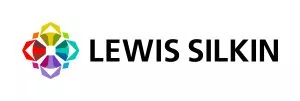- within Employment and HR topic(s)
- within Cannabis & Hemp, Law Practice Management and Criminal Law topic(s)
- with readers working within the Retail & Leisure industries
The Irish Government recently passed the Employment Equality Act 1998 (Section 20A) (Gender Pay Gap Information) (Amendment) Regulations 2025 ("Regulations") confirming some noteworthy changes to gender pay gap reporting requirements for Irish employers.
The Regulations, which came into effect on 31 May 2025, reflect a continued commitment to enhancing pay transparency and promoting gender equality in the workplace. The amendments are particularly notable for their impact on the scope and timing of reporting obligations for employers.
Expansion of Reporting Obligations
As was anticipated, the Regulations confirm the reduction in the employee threshold for gender pay gap reporting. Previously, only employers with 150 or more employees were required to report on their gender pay gap. The Regulations lower this threshold to organisations with just 50 employees. This expansion means that a significantly larger number of employers across Ireland will now be subject to the reporting requirements. Employers who have not previously been within scope will need to familiarise themselves with the Irish gender pay gap reporting regulations and ensure they have the necessary systems in place to capture and report the required data.
Shortened Reporting Timeline
In addition to broadening the scope, the Regulations also shorten the timeframe within which employers must publish their gender pay gap information. Accordingly, the results must now be published within five months of the chosen "snapshot date" (which may be any date in June chosen by the employer), and no later than the end of November. Previously, employers had six months to publish their reports. This change will require employers to act more swiftly in collating, analysing, and publishing their data, and may necessitate adjustments to internal processes to ensure compliance within the new, tighter deadline.
What else is new for gender pay gap reporting?
In March of this year, the Minister for Children, Disability and Equality announced the launch of a new online central reporting portal which is expected to be launched in the Autumn. This is intended to simplify the reporting process by creating one centralised database of gender pay gap reports for all organisations which will be accessible by the public. Once the centralised portal is up and running, reports will be fully searchable and more easily compared with other organisations, thereby drawing further attention to the issue for employers.
Conclusion
The recent changes to the threshold and timeline for reporting, together with the proposed introduction of the central reporting portal, reflect Ireland's ongoing commitment to improving workplace pay transparency. Employers, particularly those for whom this is their first year for reporting, should ensure they are familiar with their gender pay gap reporting obligations and are ready to publish their reports within the new timeframe. Employers should also be watching out for further developments as Ireland prepares for the implementation of the EU Pay Transparency Directive. We wrote previously on these developments here.
The content of this article is intended to provide a general guide to the subject matter. Specialist advice should be sought about your specific circumstances.



